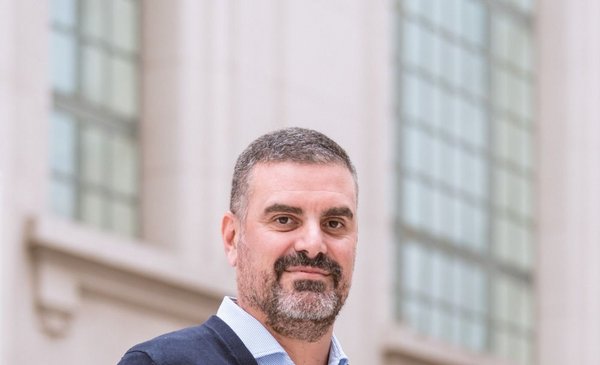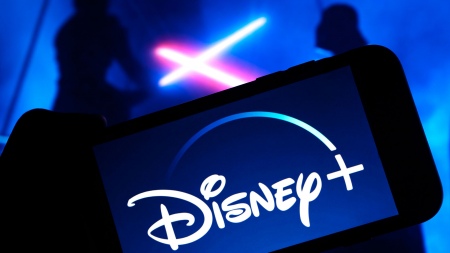With 40,000 licenses, Motorola is the technology company with the most patents in the world. The touch screen is one of them. Although the company invented it at the turn of the century, at that time the operators told it “people want buttons” and discarded it. Seven years later, (with the arrival of the iPhone), the buttons on mobile phones would be the exception and not the rule.
Examples like this caused Motorola to separate itself from the consumer and lose its leadership. Now, after being acquired by Google and then by Lenovo, Motorola has returned for revenge and, a year after its return, it is growing in Uruguay.
In an interview with Café & Negocios, Germán Greco, executive director and general manager of Motorola Mobility for Argentina, Uruguay, Paraguay and Bolivia, spoke about the development of the brand in the country and its upcoming launches.
How is the smartphone market in Uruguay?
The Uruguayan market is very demanding with technology. It is a very advanced market, in fact, Antel was one of the first to announce 5G throughout the region, and was even one step ahead of other countries in Latin America; that is in accordance with the type of mobile technology that is purchased in Uruguay. We compare the first three quarters year against year, and the Uruguayan market grew more than 15% in the purchase and entry of products to the country associated with constant renewal. Year after year, in these nine months we grew 65%, our landing is causing its results. We started with a very small market share, 6%, and we are already close to 10%. In Latin America, Motorola is number two with a 21% market share. In Brazil, we have a 30% share and in Argentina 40%. We are growing throughout Latin America and, in particular, we are beginning to participate again in high-end products, and in that segment we went from 5% to 7%, with a very recent launch, while next week we are launching two new products.
More and more brands compete for the local market. Are you saturated?
On the contrary, I think the competition is very good. It generates price movement, aggressiveness, and obviously this is a very competitive market; that in the long run is good, it causes the consumer to be the one who chooses and not the brands that impose. Our leitmotif is to democratize innovation and technology, we believe that we have a very solid portfolio with very good features and very fair prices; all this makes a perfect combo. It is true that we were away from Uruguay for a long time. A year ago we began to be more focused, and everything takes a process, it is not from one day to the next. For example, in Argentina we have a 40 share, but five years ago we had eight. Now, having grown from 6% to 9% (of market share) in Uruguay means that we are doing things right. We are number two in Latin America and number three in the United States for a reason. There is a lot to do and you have to keep getting closer to the consumer, although it is a long process. But competition is good, and for the Uruguayan it means access to better technology at a lower price.
Motorola had a time of undisputed leadership that then faded away. What happened?
I got into Motorola right back in 2004, when the V3 was released, which was just an impressive rage. It was three or four years. The company relied so much on that product that it innovated little, and in technology you have to innovate all the time. The other thing that happened was that we innovated things that we thought were the future, but they were three or five years from now, not right now. When he came out, people didn’t adopt him. The secret is to reduce the gap that may exist between the fantastic idea and the consumer who wants to use it; because, if not, the engineer develops something fantastic, but for engineers, not for consumers. That’s what happened to us between 2001 and 2005. There were a number of impressive developments. Motorola is the technology company with the most patents in the world, with more than 40,000 patents, including the touch screen, invented by Motorola in 2000, but it didn’t work. The operators said: “People want buttons” and discarded it. And in 2007, iPhone launches a phone with a touch screen and everyone went crazy, because that gap had been closed. Things like that happened to us a lot. We lost focus a bit and there was also a big issue with the operating system, we were with everyone, but with none and that made us lose focus a bit. Luckily, in 2012 Motorola became part of Google and that made us stop worrying about revenue to think more about innovation. At that time we had fifteen phones and we went on to have three, but three well done, and that’s where we refounded ourselves. Other brands fell by the wayside.
What lessons did they learn?
That we must not stop innovating. With Google, we also learned to listen to consumers and do things that make their lives easier. In 2015 we became part of Lenovo as well, and that helped us more with the supply chain part, because Lenovo is number one in the world in PCs, and we learned the best practices in how to make the phone, transport it and manufacture it. Undoubtedly, in Uruguay we will continue to grow because we listen to the consumer.
Your next releases will be in the premium segment, is there demand for them in Uruguay?
Yes, the premium market in Uruguay grew 30% in the last year. We have the idea of continuing to grow steadily, calmly, and always thinking about the consumer, democratizing technology and bringing superior quality with more affordable prices than the competition. In this sense, the premium products that we are going to launch are very good and have the best of the moment in processor and camera, but also in design (see box).
Has sales growth been boosted by number portability?
The exchange between the operators is very small, that happens everywhere. The consumer is the one who decides to move, it is more designed for them than in the business of the operators or ours, but it does bring some movement or promotions that generate new sales.
How is Uruguay coming in terms of the development of 5G?
Globally we were the first to launch a 5G phone in the United States. Today for us 5G represents 36% of global sales. In Uruguay we are already delivering five 5G models because there is a certain price range that is not available with other technology. When the networks are activated and the 5G solution is lifted, our phones will support it. This year, 40% of the phones we have in Uruguay are 5G and the two new launches are also 5G. Now the Uruguayan government has to bid. Brazil launched it with an operator, Mexico too, it is very imminent. The idea, from what I have understood with the operators, is also to keep up with these countries. The good thing is that a large part of the products will already have the capacity.
Innovative and trendy
Motorola Edge 30 Fusion and Motorola Edge 30 Neo are the new members of the Motorola family in Uruguay. “We launched them simultaneously in Buenos Aires and in Milan. Milan was chosen because We partner with Pantone, the world’s color experts and also create trends with the color of the year that is reflected in fashion, automotive and now in us, “said Greco. The manager assured that in addition to involving state-of-the-art technology, it seeks to bring innovation with different colors and tying itself to the forefront.
“In fact, the Neo that we are bringing to Uruguay is in black but also in Very Peri, which is the color of the year 2022,” Greco said. This phone includes a 6.28-inch screen, a slim and elegant design.
The Edge 30 Fusion is a premium product, “with a curved screen and a metallic finish,” Greco said. The device features a 50MP high-resolution main camera, a 6.55-inch borderless FHD+ display, and stereo speakers.
Along the same lines, Motorola joined forces with the fragrance and flavor company Firmenich to create the exclusive fragrance that wraps the packaging of these launches.

















